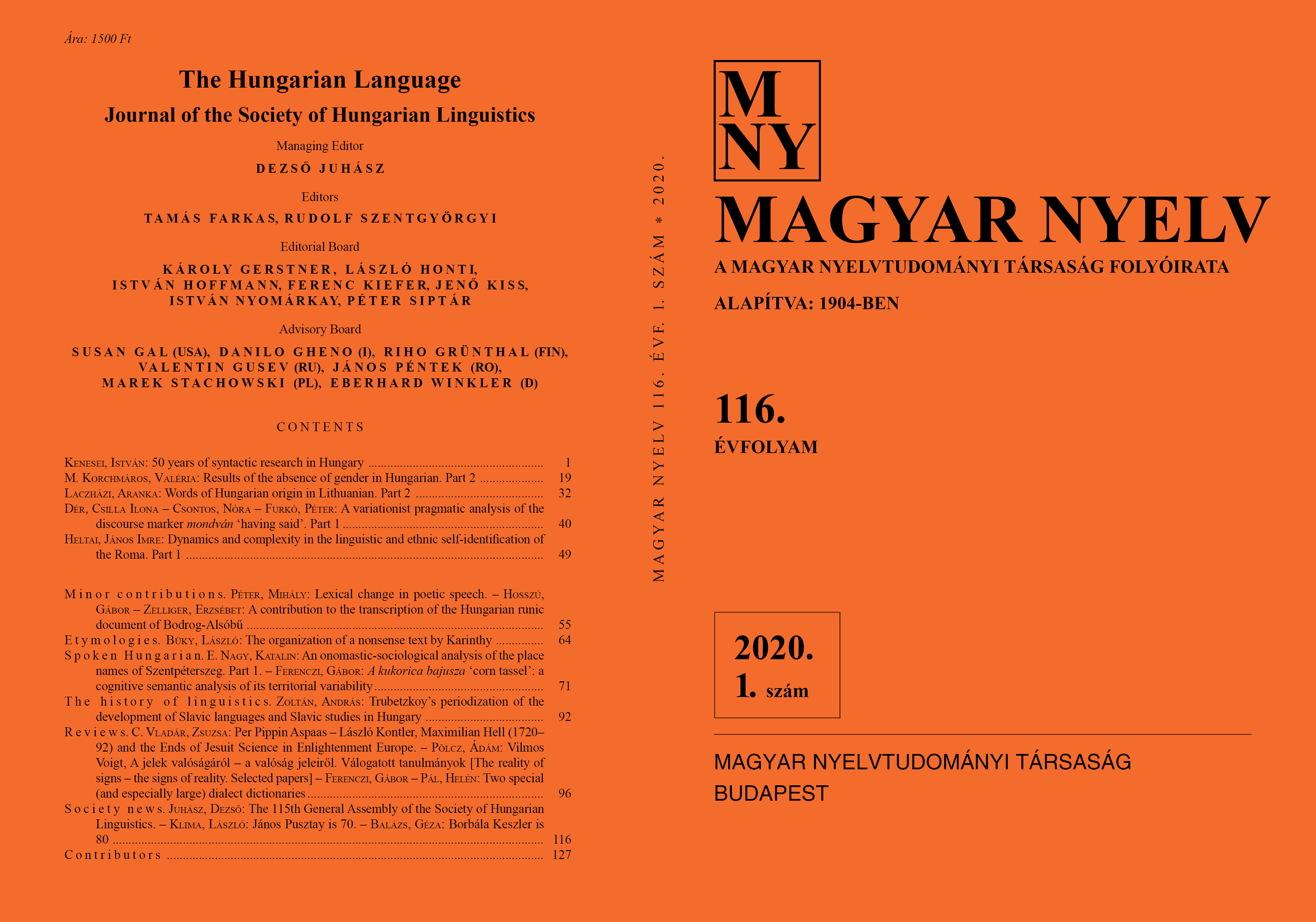Dynamics and complexity in the linguistic and ethnic self-identification of the Roma
Part 1.
DOI:
https://doi.org/10.18349/MagyarNyelv.2020.1.49Keywords:
Roma, groupism, translanguaging, superdiversityAbstract
The criteria of belonging to the group (or groups) of the Roma are traditionally manifold: language, ethnicity, sociocultural characteristics, historical particularities, etc. Nevertheless, the categorizations are constantly divided into dualities: Gypsy and not Gypsy, Boyash and not Boyash, Hungarian Roma and Vlah Roma, Romani and not Romani, or even monolingual and bilingual. This logic, which invokes the imagery of stable groups, was called groupism by Rogers Brubaker (2002, 2004). Drawing on fieldwork experiences, my paper introduces the idea that the categories of groupism are only restrictedly valid in the locus of our research, and the Romani participating in this research speak about language and ethnicity partially differently. I examine to what extent the concept of superdiversity (Blackledge–Creese eds. 2018) is capable to adapt this alternative approach into scientific inquiry, and how it could contribute to the investigation and the management of linguistic and social issues associated with the Roma.
Downloads
Published
Issue
Section
License
Copyright (c) 2024 János Imre Heltai

This work is licensed under a Creative Commons Attribution-NonCommercial-NoDerivatives 4.0 International License.
Magyar Nyelv is a Diamond Open Access periodical. Documents can be freely downloaded and duplicated in an electronic format, and can be used unchanged and with due reference to the original source. Such use must not serve commercial purposes. In the case of any form of dissemination and use, Hungarian Copyright Act LXXVI/1999 and related laws are to be observed. The electronic version of the journal is subject to the regulations of CC BY-NC-ND (Creative Commons – Attribution-NonCommercial-NoDerivatives).
The journal permits its authors, at no cost and without any temporal limitation, to make pre-print copies of their manuscripts publicly available via email or in their own homepage or that of their institution, or in either closed or free-for-all repositories of their institutions/universities, or other non-profit websites, in the form accepted by the journal editor for publication and even containing amendments on the basis of reviewers’ comments. When the authors publicize their papers in this manner, they have to warn their readers that the manuscript at hand is not the final published version of the work. Once the paper has been published in a printed or online form, the authors are allowed (and advised) to use that (post-print) version for the above purposes. In that case, they have to indicate the exact location and other data of the journal publication. The authors retain the copyright of their papers; however, in the case of an occasional secondary publication, the bibliographical data of the first publication have to be included.



